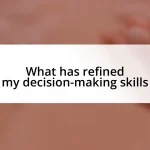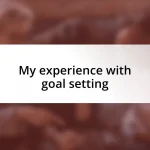Key takeaways:
- Curiosity and brainstorming are essential for unlocking creativity; a balance between free thinking and critical assessment enhances the creative process.
- Identifying and confronting personal creativity barriers, such as fear of judgment and perfectionism, is crucial for fostering a liberated creative environment.
- Regular practice of creative exercises, like daily sketching and improvisational games, can develop skills and invigorate the creative mindset.
- Collaboration with diverse thinkers fosters growth and can lead to transformative creative breakthroughs by blending different perspectives and ideas.
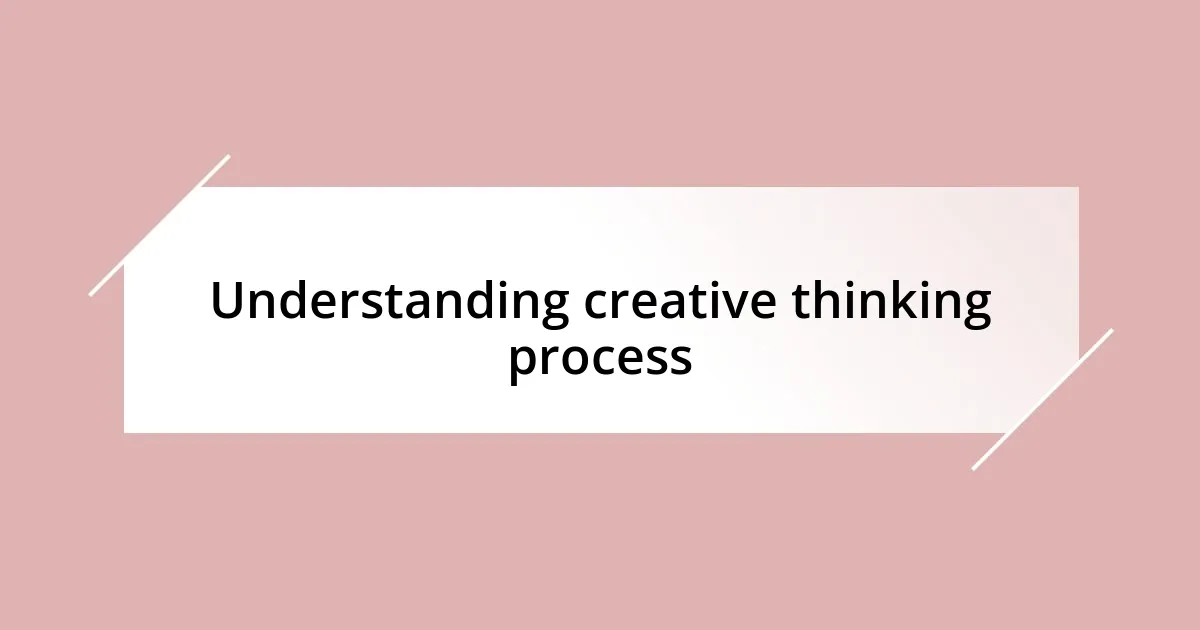
Understanding creative thinking process
The creative thinking process often begins with curiosity. I remember sitting in a coffee shop, feeling that familiar spark of inspiration as I watched people interact. The question popped into my mind: “What stories are behind their faces?” This curiosity can lead to a wealth of ideas just waiting to be explored.
As I dug deeper, I found that brainstorming free-flowing ideas helps to unlock creativity. I often jot down anything that comes to mind, no matter how wild it seems. For instance, when I attempted to design a more engaging workshop, I noted down everything from hosting it in an outdoor space to incorporating art supplies. Have you ever tried letting your mind run freely without judgment? It’s liberating!
I also learned that refining these ideas is crucial to the creative process. After my brainstorming sessions, I would take a step back and evaluate which concepts truly resonated with me. This dance between free thinking and critical assessment is where the magic happens. It’s like sculpting; you start with a block of marble and gently carve out the masterpiece hidden within. How do you toggle between exploration and refinement in your creative journey? For me, it’s this balance that brings clarity to my creative thoughts.
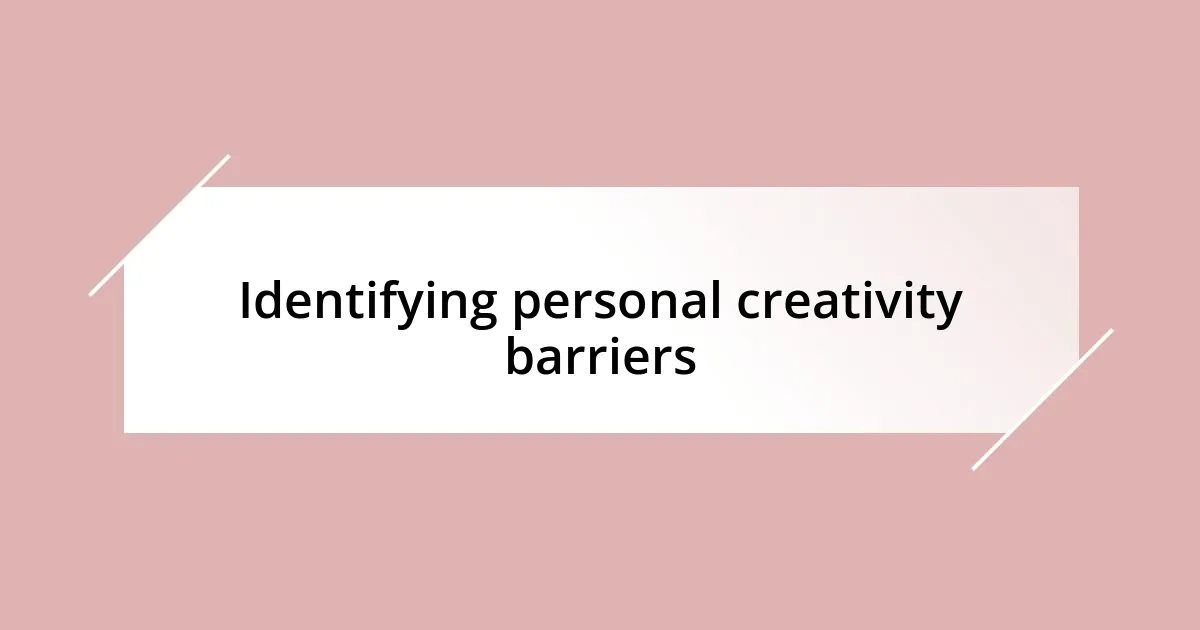
Identifying personal creativity barriers
Identifying personal creativity barriers is a crucial step in unleashing your creative potential. I can vividly remember a time when self-doubt held me back. I was preparing for a public speaking event, and that nagging voice in my head kept saying, “What if they don’t find me interesting?” It was paralyzing! Recognizing that self-criticism was a barrier, I started reframing those negative thoughts into affirmations. Rather than focusing on potential failure, I committed to embracing the idea that even my mistakes could lead to growth and learning.
A few common barriers to creativity often stem from our environment and mindset. Pinpointing these can make a world of difference. Here’s what I’ve noticed in my own experience:
- Fear of Judgment: Worrying about what others might think can stifle original ideas.
- Perfectionism: The need for everything to be flawless can halt progress and kill inspiration.
- Routine Monotony: Sticking too closely to the same daily schedule can lead to creative stagnation.
- Lack of Time: Busy lives can push creative pursuits to the sidelines, creating the illusion that we lack inspiration.
By reflecting on these barriers, I’ve learned to actively confront them, leading to a more liberated and fruitful creative process!

Techniques for enhancing creativity
To enhance creativity, I’ve discovered that changing my environment can lead to refreshing ideas. For instance, I once took my laptop to a park instead of my usual home office. The sound of birds chirping and the sight of vibrant flowers ignited a flow of creativity I didn’t anticipate. Have you ever noticed how a simple change in scenery can shift your mindset? Nature has a way of inspiring new thoughts, making it an ideal space for brainstorming and reflection.
In addition to my environment, I implement creative exercises that stimulate my mind. One favorite practice is engaging in drawing, even if I don’t consider myself an artist. When I doodle, it feels like my brain is given permission to wander freely, helping to unlock ideas that are otherwise hidden. I recall a time when an improvised sketch during a meeting sparked an entire project! What creative exercises have you tried? Even simple activities can yield unexpected breakthroughs!
Lastly, collaboration has proven invaluable in enhancing my creativity. I often team up with friends or colleagues for brainstorming sessions, finding that bouncing ideas off each other sparks inspiration. I remember collaborating on a community event, where everyone brought their unique perspectives. The result was not just a successful event but an explosion of creativity I couldn’t achieve alone. I love the way collaboration brings a fresh energy that can completely transform our ideas into something remarkable.
| Technique | Description |
|---|---|
| Changing Environment | Altering surroundings, like working in nature, fosters fresh ideas. |
| Creative Exercises | Engaging in activities like drawing releases mental blocks. |
| Collaboration | Team brainstorming sessions generate new perspectives and deeper insights. |

Building a creative environment
Creating a space that fosters creativity has been transformative for me. I remember rearranging my workspace, adding plants and colorful art that truly reflected my personality. How could such simple changes spark creativity? They made my space feel alive and inviting, allowing my mind to wander rather than feel boxed in by mundane surroundings.
One thing I’ve learned is that lighting plays a significant role in setting the right mood for creativity. When I switched to warm, adjustable lighting, it felt like a light bulb moment—literally! Soft lighting created a cozy atmosphere that encouraged free-thinking and brainstorming. Have you ever noticed how harsh fluorescent lights can drain your inspiration? A gentle glow invites ideas to blossom, transforming a sterile space into a haven for innovation.
I also like to incorporate sensory elements into my environment. Using scented candles or calming music can shift my mindset remarkably. During a particularly challenging week, I burned lavender oil and played soft instrumental tunes while working, and it felt like I entered a different world. In that cocoon of comfort, creativity flourished. What sensations inspire your thinking? Often, the right atmosphere can be the missing link to unlocking your creative genius!
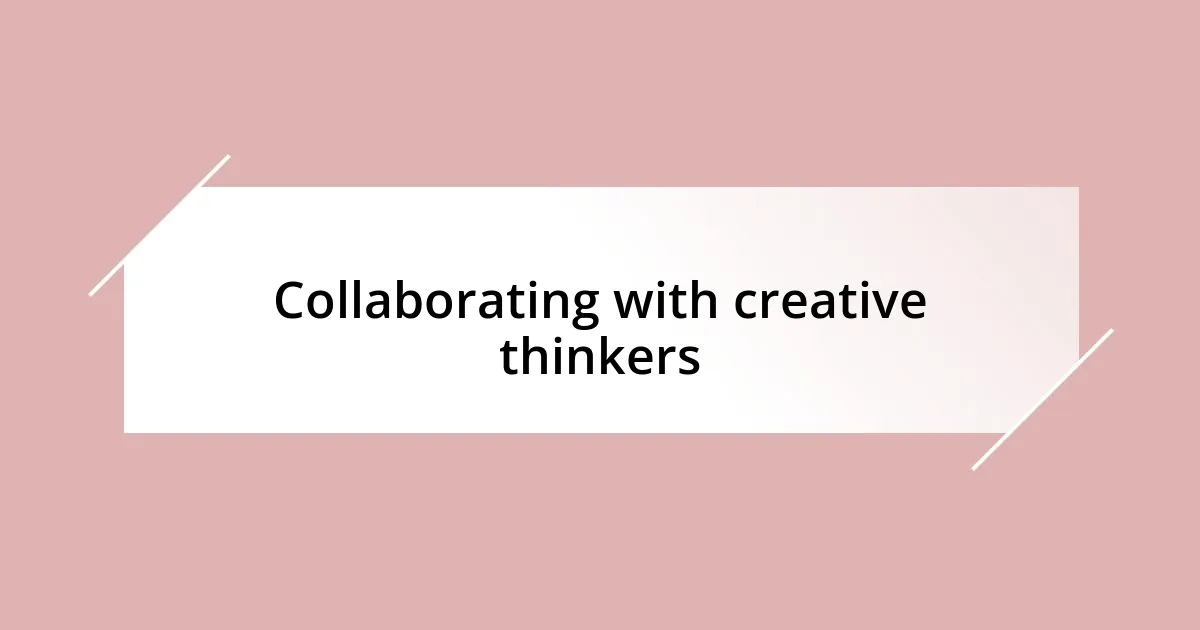
Collaborating with creative thinkers
When I think about collaborating with creative thinkers, it often reminds me of a project where diverse minds came together. I found that blending different perspectives creates a dynamic energy that fuels creativity. We were tackling a community art project, and each person’s unique background added layers to our brainstorming sessions. Have you ever experienced that surge of inspiration when ideas collide in the hands of the passionate? It’s like witnessing fireworks of imagination!
One memorable moment involved a friend whose artistic approach was completely different from mine. While I leaned towards strict structures, they encouraged me to embrace spontaneity. During our sessions, I would sketch rigid outlines, and they would boldly add free-flowing shapes. Seeing my work transformed into a vibrant piece made me realize the power of letting go. Doesn’t it feel liberating when someone else helps you step outside your comfort zone? That’s what collaboration does—it nurtures growth and pushes boundaries.
In my experience, the most fruitful collaborations are often those that allow for vulnerability. I remember a time when I openly shared my insecurities about a project I was working on, and rather than shutting down, my colleagues rallied around me with ideas and support. The fear of judgment vanished, resulting in an explosion of creativity from our discussions. How often do we let our fears limit our potential? When I opened up, I didn’t just gain input; I formed deeper connections that profoundly enriched my creative journey.
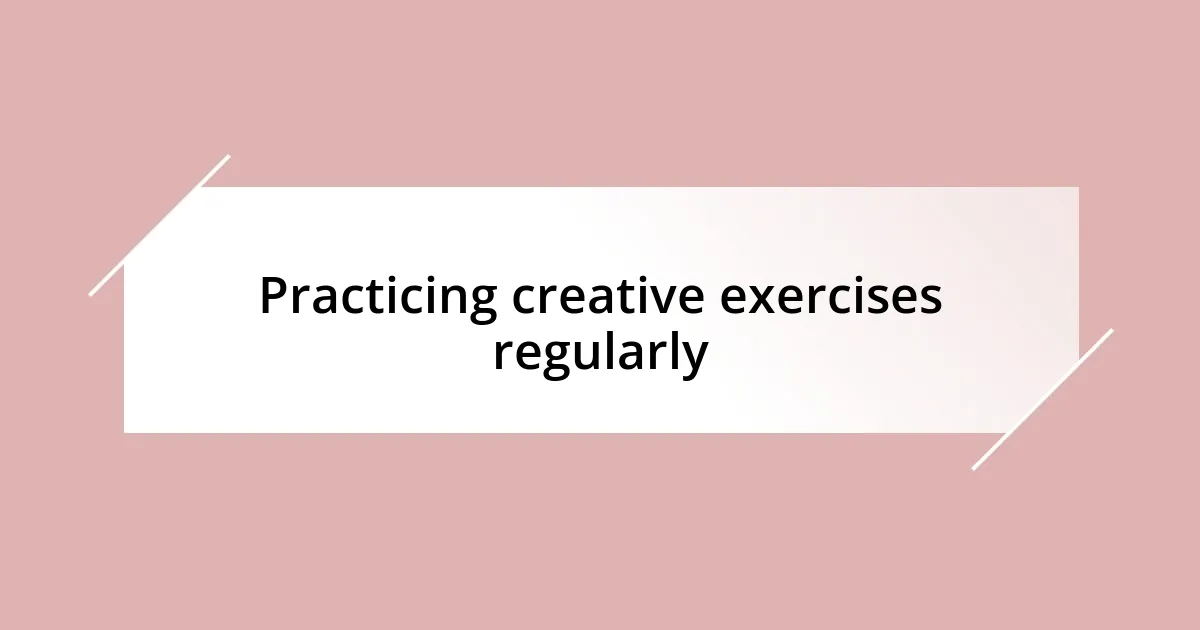
Practicing creative exercises regularly
Practicing creative exercises regularly has been one of my secret weapons. I remember committing to a daily sketching challenge, just for 15 minutes each morning. At first, it felt more like a chore, but as I started letting go of my perfectionism, I discovered a unique style that reflected my inner thoughts and feelings. Have you noticed the difference that consistent practice can make over time?
One exercise that really surprised me was writing prompts. Initially, I thought they’d stifle my imagination, but I found they actually opened up new avenues of creativity. I’d sit in my favorite nook and let my pen wander across the page, often producing unusual storylines or characters that I never fathomed before. It’s fascinating how a simple prompt can ignite an entire narrative in the mind, don’t you think?
Incorporating playful activities into my routine has also been transformative. For instance, I once spent an afternoon with friends doing improvisational games. The laughter and spontaneity broke down my mental barriers, allowing me to approach my creative work with a refreshed mindset. Can you recall a time when letting loose helped you tap into your creativity? Embracing these exercises regularly creates not only skill but a joy in creating that lingers long after the activity is done.

Reflecting on creative experiences
Reflecting on past creative experiences has been a journey of discovery for me. I often revisit moments where I felt a surge of inspiration, like when I attended a local art exhibition. It was eye-opening to see how flawlessly different artists expressed their emotions through their work. Have you ever contemplated how a single piece can convey a myriad of feelings? That exhibition made me realize how our creative expressions are deep reflections of who we are, pushing me to dig deeper into my own artistic voice.
One memory stands out vividly: the first time I presented my artwork to a crowd. My heart raced, and I could feel the anxiety bubbling up all around me. Yet, as I listened to the audience’s reactions, a wave of pride washed over me. Their feedback illuminated aspects of my work I hadn’t considered, enabling me to appreciate the nuances of my own creativity. How often do we shy away from showcasing our work because of the fear of criticism? That experience taught me that vulnerability can be a powerful ally in the creative process.
I’ve also learned that reflecting on creative setbacks can be just as valuable. I recall a project that didn’t turn out as envisioned, which initially felt like a failure. However, as I took time to analyze what went wrong, it dawned on me that those missteps were essential lessons. What did I learn from that experience? It instilled in me a resolute belief that failures aren’t just obstacles; they are stepping stones toward greater creative exploration. Embracing these moments has not only strengthened my approach but also reaffirmed my passion for creating.




